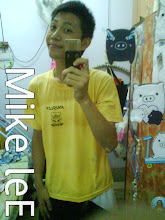 ( Our malaysian Sport princess Nicl David )
( Our malaysian Sport princess Nicl David )
 (Prince racket )
(Prince racket )~Squash is a racquet sport played by two players (or four players for doubles) in a four-walled court with a small, hollow rubber ball. Squash is recognized by the IOC and remains in contention for incorporation in a future Olympic program. Squash has been recognized as the world's healthiest sport.
~The game was formerly called squash racquets, a reference to the "squashable" soft ball used in the game (compared with the harder ball used in its parent game Racquets.
~Court~
~The 'softball' or 'international' court size was codified in London, England in the late 1920s, at 32 ft (9.75 m) long and 21 feet (6.4 m) wide. The front wall was provided with an "out line" 15 feet (4.57 m) above the floor, connected by a raking "out" line meeting the "out" line on the back wall at 7 feet (2.13 m) above the floor. The front wall also has a "service line" (originally called the "cut line") 6 feet (1.83 m) above the floor with a 19 inch high (48 cm) "tin" acting as a 'net' (originally sheeted with metal in order to make a distinctive sound when hit by the ball). The floor is marked with a transverse "half-court" line and further divided into two rear "quarter courts" and two "service boxes", as shown in the diagram above.
~The traditional "American" court for the U.S. game, (now referred to as "hardball squash") is a similar size, but narrower at 18 feet 6 inches (5.64 m). The floor and wall markings differ slightly from the "International" court and the tin is lower, at 15 inches (38 cm) high. However, hardball squash was replaced by softball in America as the standard version of squash and has since almost completely died out.
~A "Converted Court" is the result of converting racquetball courts to squash. Racquetball courts are 20 feet (6.1 m) wide and 40 feet (12.2 m) in length, so it is relatively easy to install a back wall, producing a squash court of 20 feet (6.1 m) wide by 32 feet (9.75 m) long.
~Balls are manufactured to these standards by Prince, Dunlop, Pointfore, Wilson, Black Knight and others. The "double-yellow dot" ball, introduced in 2000, is currently the competition standard, replacing the earlier "yellow-dot" ball. There is also an "orange dot" ball, which is even less bouncy than the "double-yellow dot" ball, intended for use in areas of high altitude such as Mexico City, Calgary, Denver, and Johannesburg. The lower atmospheric pressure at these high altitude regions means that the ball bounces slightly higher, resulting in the need for such a ball.








Hi! I'm a Swedish squashplayer and webmaster. I was wondering if you could place a link to my website in your post? Send me an e-mail and we could talk about it there.
ReplyDeleteelalaouisosseynabil@gmail.com